It’s essential you’re able to identify what kind of passage you’re reading. Each passage has important things to note about it. These notes will help you find your answers more quickly and save you time.
It’s also important to remember the following:
We briefly discussed passage types previously. In this chapter, we’ll go into more depth so you can better recognize them when you sit for the test.
The first passage of the ACT Reading section is called a literary narrative passage. It may be called by a few different synonyms on the top of the page (e.g., prose fiction, fiction). But the same strategies that we discuss here apply.
The literary narrative is a short, often fictional story that is centered around characters. The literary narrative focuses on the perceptions, observations, feelings, and thoughts of characters. These things will be important to mark as relevant information like we discussed in the Annotating chapter.
Accompanying a literary narrative, there are often several questions that ask what’s going on in a character’s head.
Here’s an example of such a question.

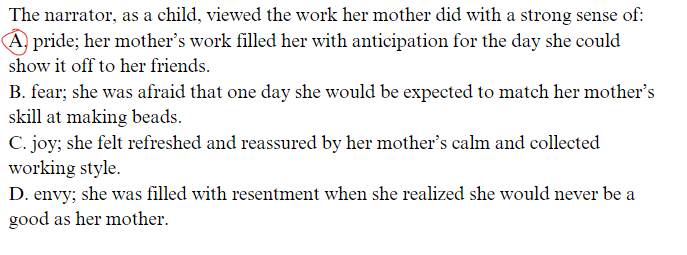
Thus, It’s vital to note the perceptions, observations, feelings, and thoughts of the characters.
What relevant information should you look for in a literary narrative passage?
The perceptions, observations, feelings, and thoughts of characters
The second passage that you will come upon is always the social science passage.
The social science passage is a nonfiction text describing a historical person, event, or place. It’s like reading part of a history book. So, it only makes sense that the relevant information you should take note of on the social science passage is what makes it part of history.
What do we mean by that? More specifically, you want to take note of the following:
Even though the list above uses the word “character,” it’s important to remember that we could be talking about the background of an event or place rather than a person (or character) depending on what the passage is talking about.
Take a look at this example of a social science passage question.
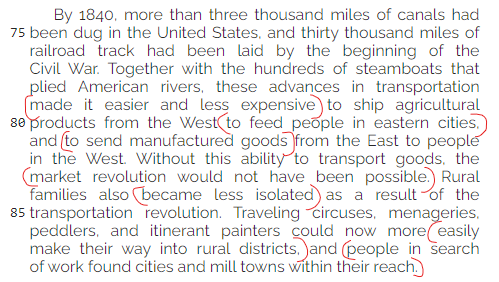
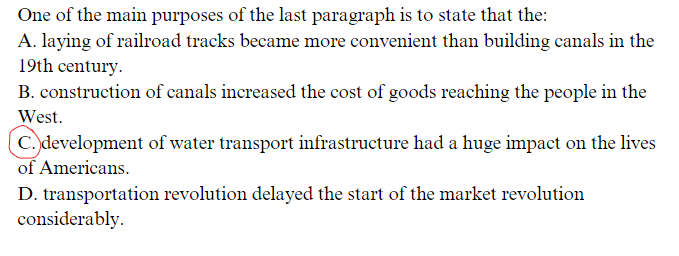
The question above is asking about the notable accomplishments of our subject—one of the important things to take note of from a social science passage.
Question: The social science passage is nonfiction. True or false?
Answer: True, the social science passage is nonfiction. This makes sense considering that the social science passage is like a history book.
The third passage you will see on the test is always the humanities passage. This is a cross between the first two passages we already discussed (literary narrative and social science). It is a nonfiction text, like the social science passage, but it also has the possibility of being a story-like text surrounding the thoughts and feelings of a character.
So, where do we go from here?
The trick is that the Humanities passage will either behave like a literary narrative or like a social science passage… and you have to find out which it is.
But fear not. There’s a simple way to find it out.
So, what things should you annotate as relevant information if the humanities passage is in third person?
Basically, things that make history:
What things should you take note of if the humanities passage is in first person?
It’s the “fuzzy” information that’s important in this case:
The fourth and final passage in the reading section is the natural science passage. This is a text about scientific topics like biology, chemistry, or physics. Thankfully, there is no need for previous scientific knowledge to do well on the natural science passage. They will give you all the information you need to answer the questions.
The natural science passage is similar to the social science passage in that its purpose is to inform the reader about real-life things. So, just as you want to take note of “what makes history” (or what is important to history) when you’re reading a social science passage, you want to take note of what is important to science when reading a natural science passage.
What do we mean by that?
We care about big picture things. Key theories about why the Milky Way has such a definitive warp might be appropriate things to annotate if they are expanded upon throughout the entire passage. Little details said only once and then never mentioned again (like the fact that the Sagittarius Dwarf Spheroidal Galaxy is about 50,000 light-years from the galactic center of the Milky Way) are likely not important.
Other key things to look out for:
Even though it might seem like the natural science passage is paragraph after paragraph of scientific facts, there is a point to the author saying all of these things.
Often, the author will identify a scientific misconception near the beginning or even middle of the passage and then clear it up in the end—serving to prove something in the last couple paragraphs. These overarching ideas are the ones to note for later and to annotate as relevant information.
Here’s an example of a question that asks about these overarching ideas.

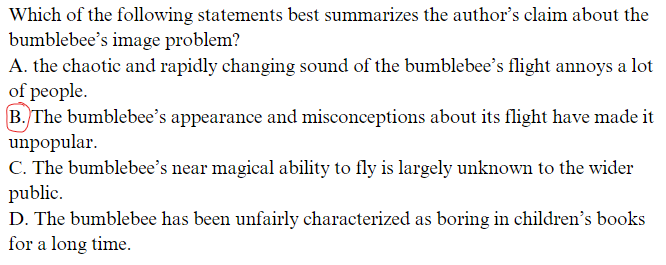
So to recap, what things are important to mark as relevant information from a natural science passage?
One of the above passages will also be what’s called a paired passage. It looks something like this:
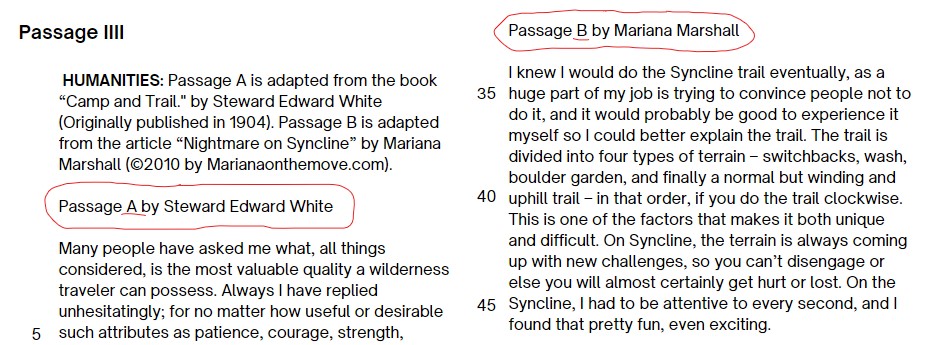
There will be a “Passage A” and a “Passage B,” and your job is to navigate two sets of text along with their questions.
Thankfully, there is a strict pattern to the question set for paired passages. They will:
On certain paired passage question sets, they may ask more questions about Passage A than Passage B or vice versa. The takeaway is that they will always appear in order.
Knowing that the questions appear in order is important because it affects how you approach the paired passage. Here’s what we recommend:
If you had to guess, why do you think we suggest reading only Passage A before starting to answer the questions?
It keeps your stories straight. You don’t want to get confused on whether you are answering questions about the first or the second passage. Answering questions about only passage A will be easier if that’s all you’ve read so far.
You now know the different passage types you’ll encounter on the ACT Reading section. Well done. If you can remember this come test day, you’ll have a distinct advantage over your peers on the ACT.
Remember, the ACT might be challenging, but parts of the test are incredibly predictable. You now know which passages appear on the test, what they cover, and the content you will be quizzed on. So, when you sit for the test, you’ll know what to remember to raise your score.